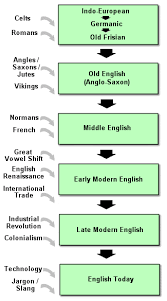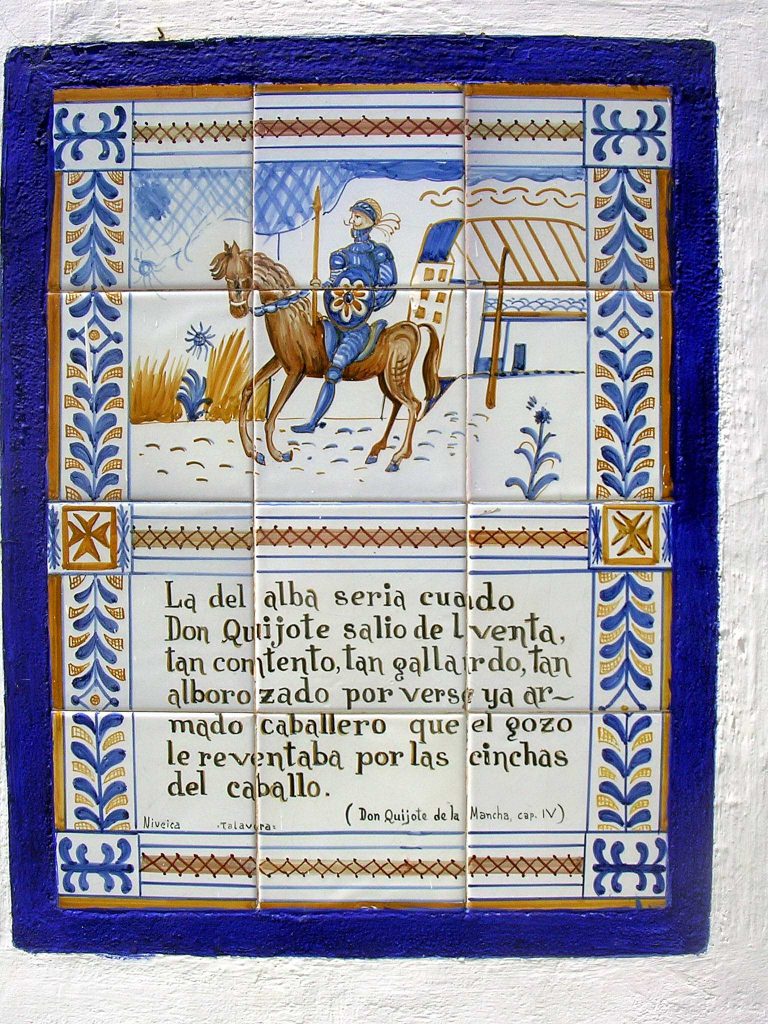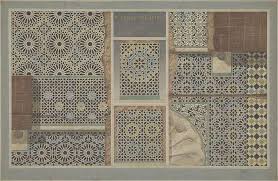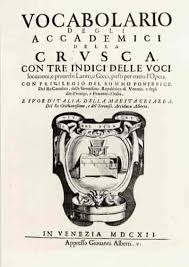HOW INDIVIDUAL LANGUAGES EVOLVE
Today, we are going to talk about the historical trajectory of a given language as understood individually, starting from the point when it can be considered independent and distinct from its Sister Languages. In other words, that’s the path that a certain language follows after venturing outside the bulk of its Family’s “common history”.
Indeed, even after any given language has completed the split from its Parent Language, and starts being recognisable as a language on its own terms, it is certainly not immune from further evolution and change.
English, for example, has lived through at least four different stages of development. After splitting from Proto-West-Germanic, what we now know as “Old English” lasted until the year 1100; the form that the language took after 1100 is called “Middle English”, and it lasted until the year 1500; then, we have an intermediary stage called “Early Middle English” in the years 1500 and 1600; and, finally, we classify as “Modern English” everything that comes after that.

Understanding how exactly scientists are able to define such categories is beyond the scope of this article, but we have all been exposed to what we popularly deem to be “outdated” versions of our own language, may it be in school, in literature, or elsewhere. Hence, we are all more or less familiar with the idea of having an older version of the language that is different from the more recent versions, and so on.
For indentifying the different “stages” of a language’s history, experts mainly use chronological terms such as “Old”, “Middle”, “Modern”, “Early”, “Late”. On special occasions, broader terms such as “Proto”, “Ancient”, “Classical”, and others could be used, depending on many different features of a language’s history and on our degree of certainty about its past.
IS THIS EVEN MY LANGUAGE?
To recap, we have seen that each and every language descends from an older language, and the same “older” language can give birth to many different “newer” languages. Furthermore, after a language like English, French, Mandarin Chinese split from the other members of its family, it will still be subject to the dynamics of language change.
You might be asking what is the purpose of all this: if we know that after (roughly) the 8th century English was different from Dutch and German, what’s the point of further subdividing the language into Old English, Middle English, and so on?
First of all, we need some help in navigating the evolution of individual languages because they can change quite dramatically through history. If we can easily see how the everyday language of today is different from that of even just 50 or 100 years ago, that’s the more true the further we go back in history. An older stage of development for a given language is sometimes close to unrecognizable compared to its newer versions, or at least very difficult to understand for a non-trained speaker.

Second, if the language develops rather stably for a while, and then something big happens – either to the language, to its speaker community, or both – then we will need to define a wholly different stage for its development.
When we say “something big”, this could either mean an external phenomenon affecting the population/territory, or some changes to the language only, with no impact on its speakers’ lives.
For example, a language is likely to change a lot when a territory is conquered by a different kingdom or when a population collectively choses a new religion, for obvious reasons. Otherwise, developments that are intrinsically linguistic range from a change in pronounciation of individual sounds to the loss (or, less often, even the acquisition) of entire parts of its grammatical makeup.
OLD ENGLISH, MIDDLE ENGLISH, MODERN ENGLISH
Finally, let’s keep in mind that the classification of Parent – Daughter language works also in the case of a single language evolving all by itself.
Saying that English is a Daughter Language to Proto-Germanic is an acceptable definition, and it’s useful to get a general idea of what languages belong to a given family. If we have to be precise, though, we need to identify a few more steps.
First of all, Proto-Germanic split into Proto-West-Germanic, Proto-Norse and Proto-East-Germanic. We will learn more about these three groups in the next article. What interests us here is that the Proto-West-Germanic language gave birth to the very first version of the English language, which is called “Old English” as we have just seen.
During the Normand rule over England, starting around 1066, the language of the conquerors (Old Normand French) influenced the Old English language very deeply. This includes the addition of a ton of Romance-derived words, and the introduction of some new grammatical features on the English language.
Indeed, following this event we start speaking of Middle English. That’s a version of the language that is more similar to what English looks like today, altough there are still some easy to spot differences.
Middle English is then a daughter language to Old English, just as Old English is a daughter language to Proto-West-Germanic. Then we have Early Modern English, which is the version of the English language that was spoken in the years 1500/1600 and is marked by profound changes in the pronounciation of words and sounds.
Needless to say, Early Modern English is daughter to Middle English, and is the true and direct Parent Language to Modern English as it is spoken today.
LANGUAGES FROM THE PAST…
Let’s restate that if a language has existed in different varieties throughout history, then each of these varieties is daughter to the previous one.
As it is frequently the case in historical linguistics, the definitions here are not clear cut, nor they need to be. When we speak of Middle English being different from Early Modern English, and we give a certain timeline for that, it doesn’t mean that the language of the year 1490 was completely different from that of the year 1510.
This is a continuus and slowly-moving process, just with a few breakthrough events that accelerate the pace at certain points in history.
Indeed, the degree of difference between early modern english and Middle English is comparable to that between Middle English and Old English, which in turn is comparable to that between Old English and Proto-West-Germanic. We shall not be fooled by names here, it’s always the same Parent – Daughter pattern. The only difference is that sometimes there’s only one Daughter to a given Parent while in other cases a given Parent gives rise to many different Daughters.
When we use alternatives names such as “Proto”, “Ancient”, “Classical”, that’s because want to highlight some specific aspects of a language variant. We have seen that a Proto-Language is a language for which we have no written records, so we cannot be sure how exactly it sounded like.

“Classical” is not as precise a term, but to give you an idea that’s the definition that Wikipedia includes: “A classical language is any language with an independent literary tradition and a large body of ancient written literature.” So we undisputably have Classical Chinese and Classical Arabic, but the definition is usually used in such diverse instances as Classical Armenian or Classical Maya.
“Ancient” is an even vaguer term, but better to get acquainted to it because it is still used in some fossilised occurrencies. Usually, the name was granted to languages which, in addition to being chronologically old, have carried some historical and cultural significance beyond their own speaker communities.
… AND FROM THE PRESENT
Finally, we are going to take one last roundup of terms that can apply to the various languages that have existed in the world and their varieties.
Let us start right here: “language variety” is a popular term that straddles the line between language and dialect, and is used whenever one wants to highlight the difference between the different manifestations of a language or language group. It is a rather generic term that can also be associated with transversal aspects such as register or style.
When we say “dialect” however, we usually mean that two versions of a certain language are somewhat different but not enough to be considered different languages. This is the case, for example, with the “American” and “British” varieties of English, which are technically defined as dialects of modern English.
When we look back at Old English and Middle English, it is not a matter of life and death to call them “different languages” and not simply “different dialects”, what matters is to know that on average their differences are huge.
We usually call them “different languages” because an Old English speech piece will be way different from a Middle English one, and hardly understandable by a native Middle English speaker. In contrast, comprehension between native speakers of British English and American English is total, even if clear differences can be identified between the two dialects (more so in speaking than in writing, for sure).
“Living language” or “dead language” are the names for a language for which there are still at least some native speakers alive, or not, respectively.

Finally, we often encounter the definition of a “standard language”. It refers to those languages for which a precise code of rules and best practices has been defined, usually brokering the influences of different dialects or language varieties. This happens in the case of those languages that are the key means of communication for large-scale interactions such as commerce, the government, or the media. The term “vernacular language” is often used for what is not a codified “standard language”.

Leave a Reply